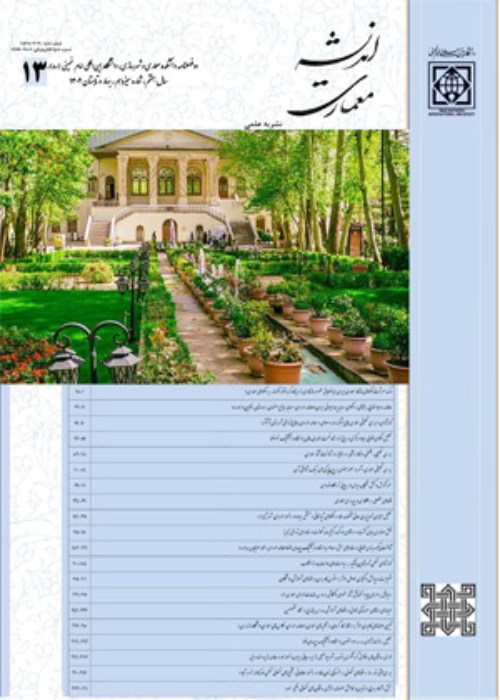The Role of Mental Schemes in the Formation of Traditional Maragheh Housing Pattern
In recent decades, Iranian architecture has experienced a break with its environmental, historical and cultural context. This shift toward mainstream trends in the contemporary world has brought the human aspect of Iranian architecture to its most materialistic embodiment. As a result, architecture has been reduced to its minimal essence as shelter, subsequently, affecting the inhabitants’ mental schemas of residential environments.Research Question: This article seeks to answer the following questions: What mental schemas have helped shape the traditional housing pattern of Maragheh city? And which of the schemas have had the highest impact on shaping this pattern?
The relationship between mental schemas and their external representation (that is, the housing pattern) can be examined through cognitive processes that are rooted in cultural factors. After a review of relevant literature, this paper investigates the role of mental schemas in shaping place patterns. To this end, we identified the different types of behavioral schemas through cognitive processes (perception, cognition, evaluation, emotion, behavior). Then, in the second step, we investigated these schemas through field surveys in the form of questionnaires and interviews with residents of traditional houses, and examined their relationship with traditional housing patterns in Maragheh. Traditional houses in Maragheh can be categorized into four patterns. After analyzing field data, we identified the most effective schemas in the formation of traditional housing in Maragheh.
Our findings indicate that the following schemas have had the highest impact on the formation of the housing pattern in Maragheh in order of arrangement: Context, Emotion, Role, Fact and Concept, Strategy/Procedure and Self/Person. The Context schema with its subcomponents of privacy, nature, hospitality, and personal space received the highest mean score (3.32) as the first factor. The Emotion schema with its subcomponents of happiness and pleasure, belonging, and reactive-emotional content received a mean score of 3.26 as the second factor. The Role schema with its subcomponents of socialization and social bonding, participation, and community life received a mean score of 3.06 as the third factor. The Fact and Concept schema with its subcomponents of association and finding meaning, conceptualization, memories and lessons, operational perception and inferential perception received a mean score of 3.02 as the fourth factor. The Strategy/Procedure schema with its subcomponents of attention, cognitive mapping and decision making received a mean score of 2.85 as the fifth factor. Finally, the Self/Person schema with its subcomponents of identity and independence received the lowest mean score (2.65) as the least important factor in the formation of traditional housing pattern in Maragheh. The ultimate achievement of this research indicates that there is continuity among all schemes in traditional housing patterns. The patterns seem to have been continuous and gradual. In contemporary society, however, schemas are undergoing dramatic changes and corresponding to them, changes occur in effective schemas in spatial patterns. Therefore, in contemporary housing design, it is necessary to adjust spatial solutions to allow for the shift from the current patterns of housing to desirable cultural patterns in contemporary housing with a comprehensive understanding of mental schemas at both levels of common and ideal cultural schemas.
Mental Schemas , pattern , Place , Housing , Maragheh City
- حق عضویت دریافتی صرف حمایت از نشریات عضو و نگهداری، تکمیل و توسعه مگیران میشود.
- پرداخت حق اشتراک و دانلود مقالات اجازه بازنشر آن در سایر رسانههای چاپی و دیجیتال را به کاربر نمیدهد.



